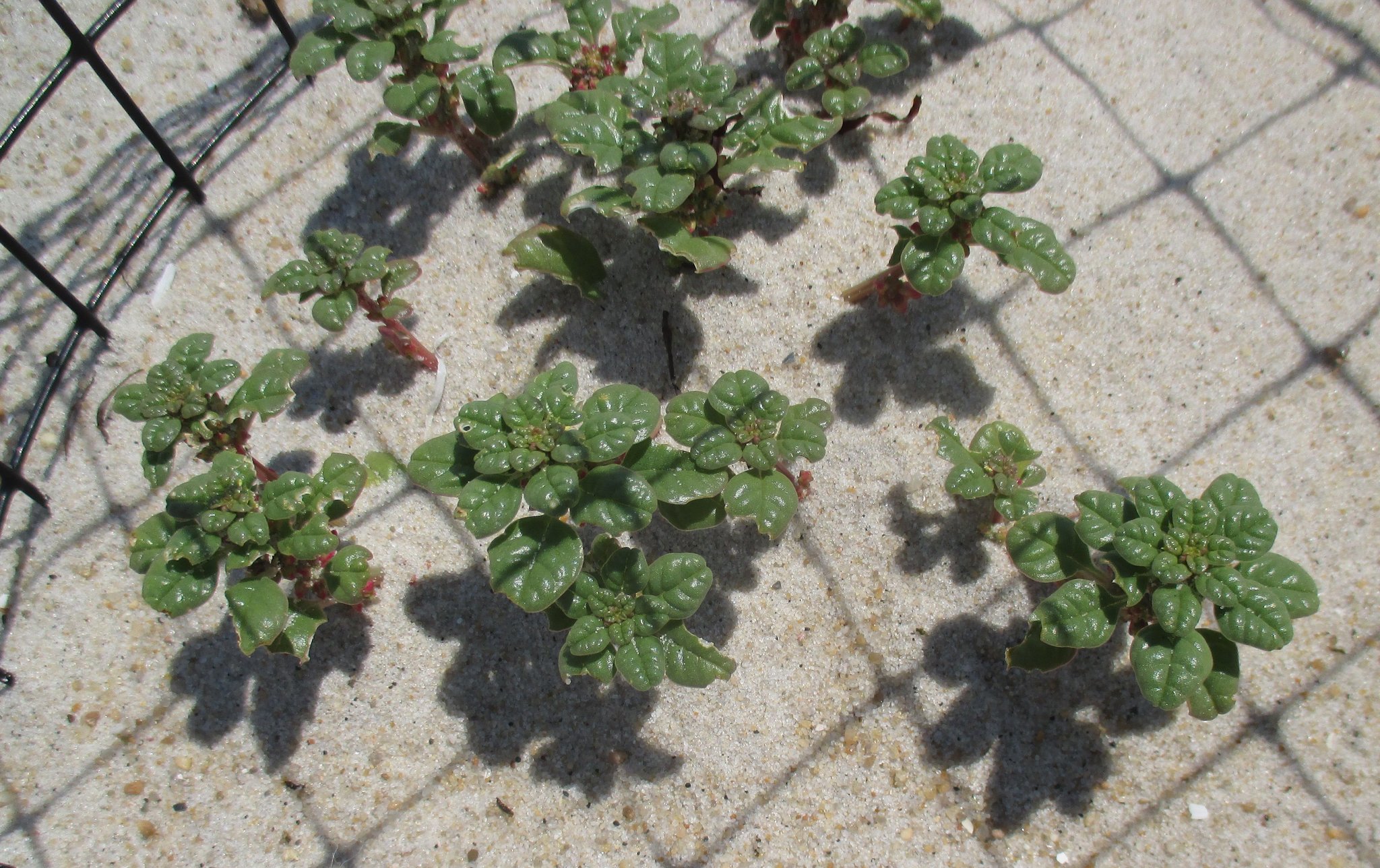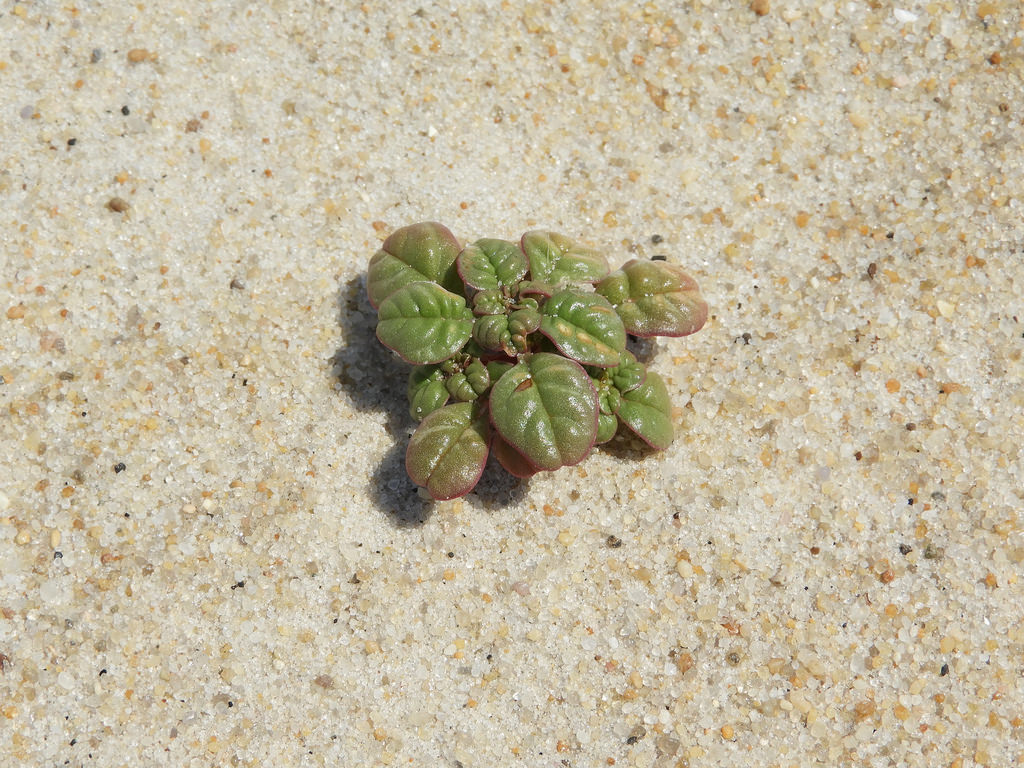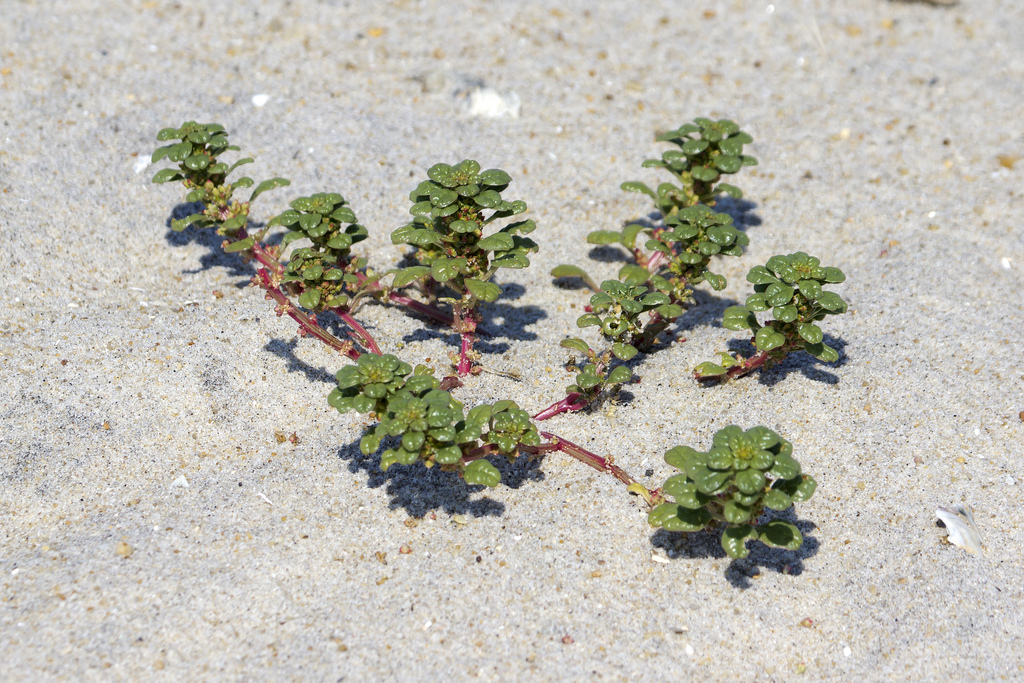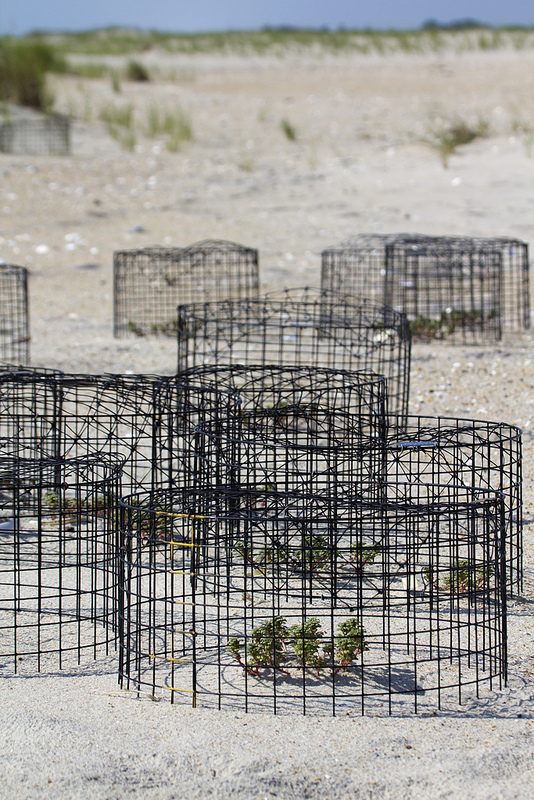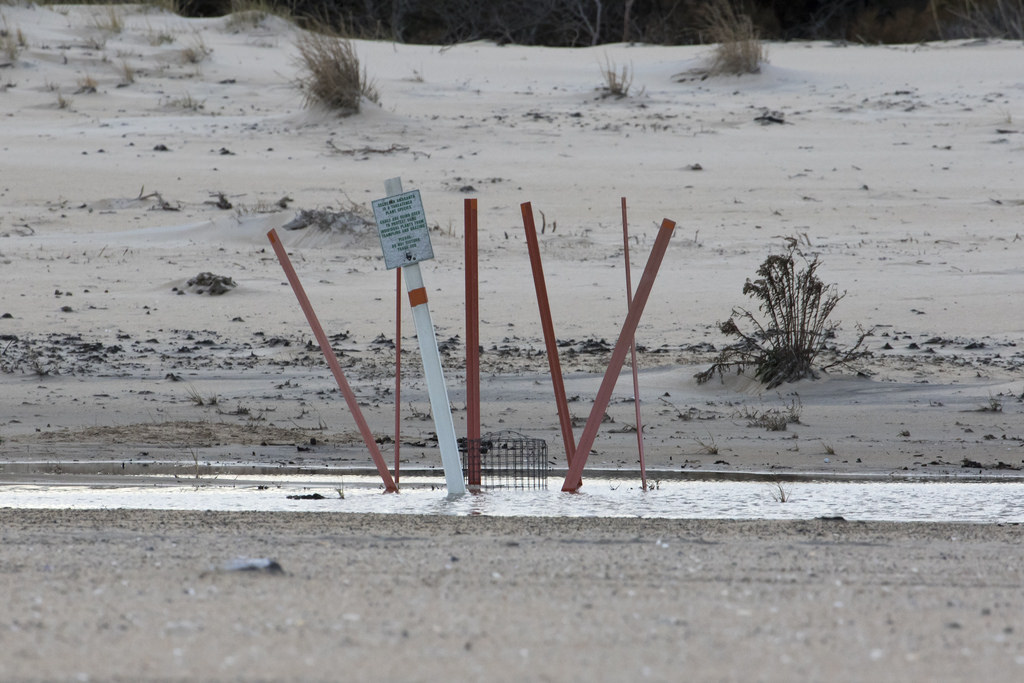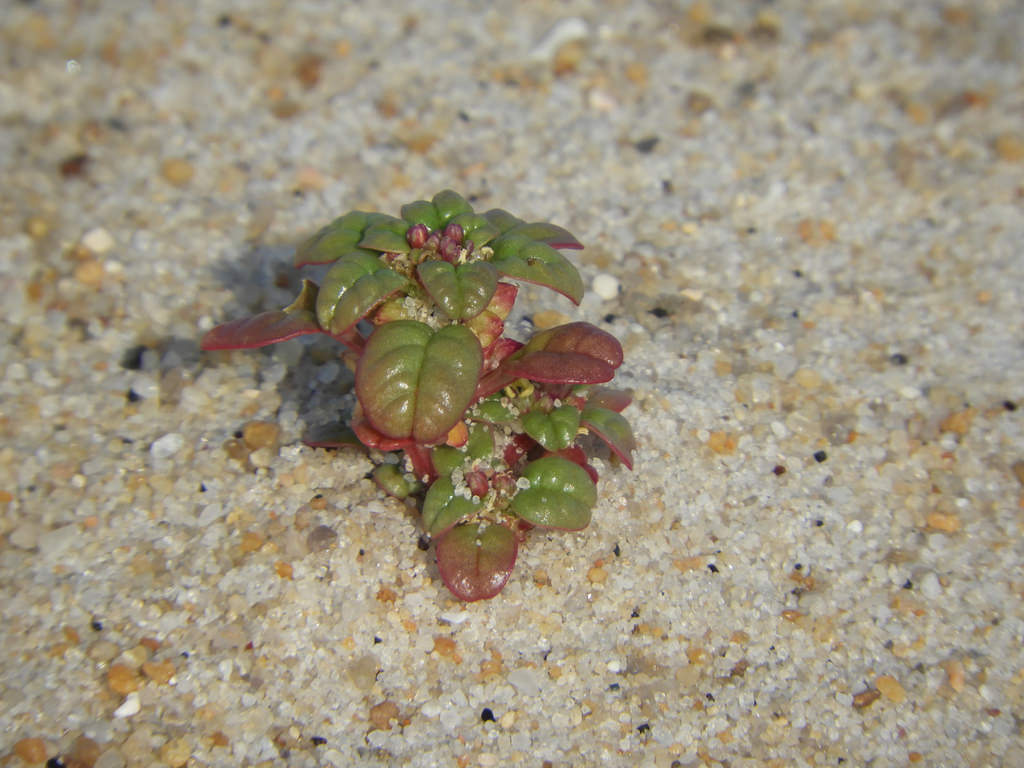Map Snapshot


19 Records
Status
Seaside Amaranth is an Endangered species in Maryland, and, with fewer than 50 populations worldwide, it is also globally and federally Threatened. In the United States, it grows in beach habitat along the Atlantic Ocean. This annual, clump-forming plant grows just above the high-water mark at the base of sand dunes, in sparsely vegetated, low-diversity habitat. It once ranged from southern Massachusetts to South Carolina, but is gone from 2/3 of its former U.S. range. After disappearing from Maryland's barrier islands in the late 1960s, Maryland is now one of a few states where it is growing, with an assist from biologists at Assateague Island National Seashore. It also has been reintroduced in Massachusetts and North Carolina. The plant seems to need extensive areas of naturally dynamic, dune and barrier-island habitat, where, as a prolifically seeding annual, it can seed widely and "move" around from year to year as a "fugitive" species in the landscape, colonizing appropriate habitat as it becomes available. (Seaside Sandmat (Euphorbia polygonifolia) is also a fugitive species, occupying similar habitats.)
According to Resource Brief - Seabeach Amaranth, published by Assateague Island National Seashore (updated Feb. 15, 2021), a single plant found in 1998 marked the first find of the species on Assateague in more than 30 years. By 2000, a total of 7 wild plants had been discovered, and the National Park Service, along with other State and Federal agencies, began trying to restore a viable population to Assateague. Between 2000 and 2002, offspring of these were planted at many locations along the Maryland part of the island. The plantings suffered high mortality, likely due to plant shocking, strong winds, and unsuitable habitat. Grazing by wild horses and deer may also have contributed. Further, because amaranth must compete with other plants for space, sunlight, water and soil nutrients, amaranth plants depend on frequent storm surges to reduce competition and create new unoccupied habitat. Other threats include fencing and sea-wall construction, development, heavy beach recreational use, and over-sand vehicle traffic (especially detrimental from June through September, the plant’s growing season). The fugitive nature of the plant makes it difficult to protect, but each year Assateague staff place wire mesh cages around plants, if any are found. Between 2017 and 2020, almost no plants were noted.
Assateague has some other state or federally listed species requiring similar habitat, including tiger beetles, piping plovers, and seaside knotweed.
Description
The stems are fleshy and pinkish-red or red, with small, rounded leaves. Inconspicuous flowers and fruits are borne in clusters beneath the leaves. The plants produce enormous quantities of very tiny seeds, increasing the odds that new populations will be established each year.
Germination occurs from April to July, and the small unbranched sprig that develops soon branches into a clump that commonly reaches 30 cm in diameter and sometimes a meter or more.
Where To Find
Along the Atlantic coast and barrier islands, just above the high-water mark at the base of sand dunes, in sparsely vegetated habitat.
Seasonality Snapshot
Source: Wikipedia
| Amaranthus pumilus | |
|---|---|

| |
| Scientific classification | |
| Kingdom: | Plantae |
| Clade: | Tracheophytes |
| Clade: | Angiosperms |
| Clade: | Eudicots |
| Order: | Caryophyllales |
| Family: | Amaranthaceae |
| Genus: | Amaranthus |
| Species: | A. pumilus
|
| Binomial name | |
| Amaranthus pumilus | |
Amaranthus pumilus, the seaside amaranth or seabeach amaranth, is a species of amaranth. This annual plant is now a threatened species, although it was formerly scattered along the eastern coast of the United States, its native range.
History
[edit]The seaside amaranth once ranged widely from South Carolina to Massachusetts. It was first identified in New Jersey, but disappeared in that state by 1913. It is now gone from two thirds of its original range.[1] This plant has reappeared on some areas where it was formerly extirpated by habitat loss and recreational activities.
Description
[edit]The plant consists of many low and prostrate stems with fleshy leaves. Larger plants with hundreds of stems may cover an area of about a meter. Yellow flowers are obscure, but many seeds are produced in July. The lengthy viability of these seeds may account for the reappearance of Amaranthus pumilus in places where it had formerly vanished.
Habitat
[edit]This plant is found on sandy beaches, especially on barrier islands. It flourishes at the base of dunes above the high water mark. Although the seaside amaranth is found in the neighborhood of other beach plants, it is intolerant of all but American sea rocket (Cakile edentula). The plant is important in the sandy beach ecosystem, accumulating sand around itself to form dunes.[4]
Conservation status in the United States
[edit]The plant was listed as a threatened species of the United States in 1993.[2][3] There are perhaps 50 populations remaining.[1] It is listed as a special concern and believed extirpated in Connecticut,[5] as threatened in North Carolina, and as endangered in Maryland, New Jersey, New York, and Rhode Island.[6] Threats include disturbance of its beach habitat through development, construction of seawalls, off-road vehicle activity, and other forces.[1]
References
[edit]- ^ a b c d NatureServe (5 May 2023). "Amaranthus pumilus". NatureServe Network Biodiversity Location Data accessed through NatureServe Explorer. Arlington, Virginia: NatureServe. Retrieved 30 May 2023.
- ^ a b "Seabeach amaranth (Amaranthus pumilus)". Environmental Conservation Online System. U.S. Fish & Wildlife Service. Retrieved 30 May 2023.
- ^ a b 58 FR 18035
- ^ "Center for Plant Conservation". Archived from the original on 2010-12-15. Retrieved 2011-01-08.
- ^ "Connecticut's Endangered, Threatened and Special Concern Species 2015". State of Connecticut Department of Energy and Environmental Protection Bureau of Natural Resources. Retrieved 19 January 2018. (Note: This list is newer than the one used by plants.usda.gov and is more up-to-date.)
- ^ "Plants Profile for Amaranthus pumilus (seaside amaranth)". plants.usda.gov. Retrieved 25 January 2018.



